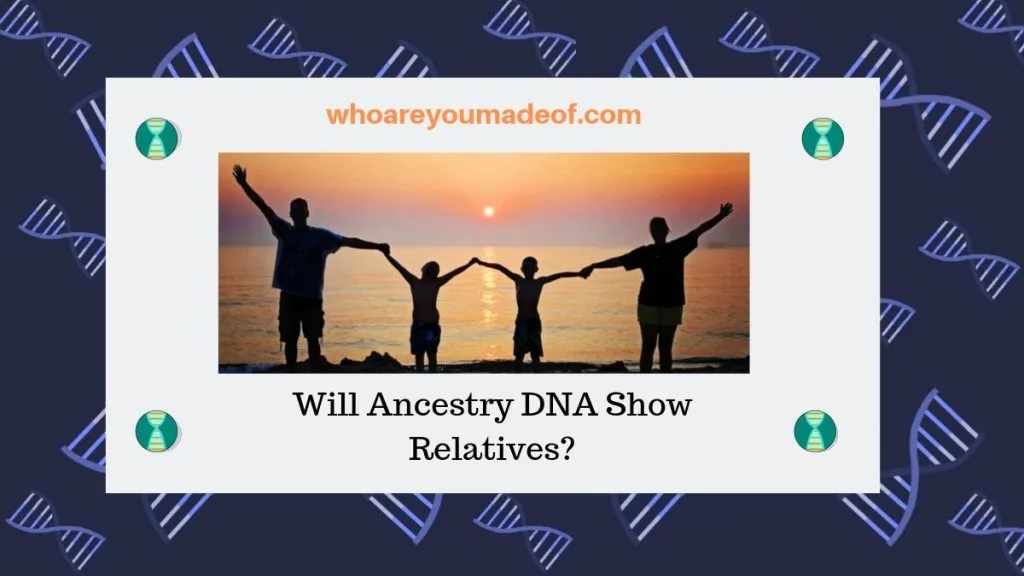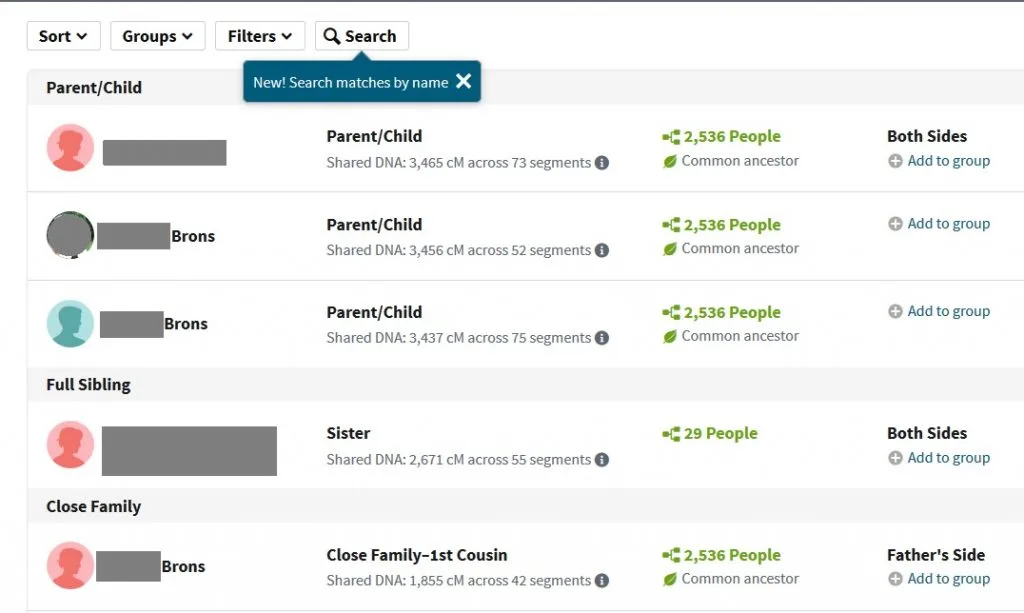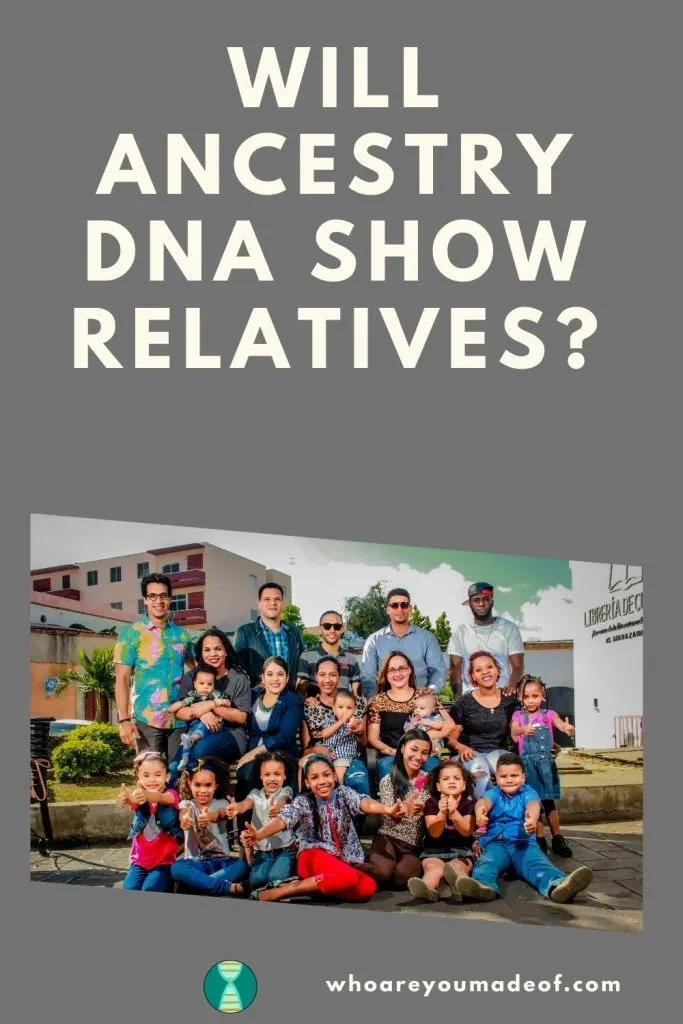Thinking about taking an Ancestry DNA test? If so, you might want to know if Ancestry DNA will show relatives on your results. In this post, learn the answer to this question, as well as:
- How Ancestry DNA can tell you who you are related to
- Whether Ancestry DNA can find siblings
- How to get an Ancestry DNA test

Can you find relatives with Ancestry DNA
Yes, Ancestry DNA match your DNA with other Ancestry DNA customers. People who show up as a genetic match to you will be on your DNA match list and the vast majority of these individuals are your relatives related to you in some way.
Everyone has DNA matches on Ancestry. Some of our DNA matches are more closely related to us than others, but we all have at least some DNA matches.
Some people who test with Ancestry have tens of thousands of DNA matches - i.e. relatives who have also tested with Ancestry. Some kits that I manage for individuals born outside of the US have only 4,000 matches, which is still a very large number of matches.
Your DNA match list will be organized in order of most closely related to most distantly related. Exactly who is on your list will depend on who among your family members, both close and distant, has taken a DNA test with Ancestry DNA.
On my DNA match list, for example, my matches start with my daughter and parents. Further down, you can see the match with my full sister and my grandmother.

As I continue to scroll through my list of DNA relatives, I will find second, third, and fourth cousin DNA matches. Even further down the list are people who are as distantly related as eighth cousins!
Along with the matches name or screen name, Ancestry DNA also gives me information about my shared DNA with the match, including:
- how much DNA is shared
- an estimated relationship
- whether the match has a family tree connected with their results
All of this information can help me determine exactly how I am related to my relative.
How does Ancestry DNA tell you who you are related to?
Ancestry DNA compares your DNA with that of every other Ancestry DNA customer in order to find people with whom you share genetic material. The process the company uses identifies matching DNA segments shared between you and other customers in order to find those that were likely inherited from common ancestors.
The reason that Ancestry DNA can identify our genetic matches has to do with how DNA is inherited from our parents and passed down each generation. To understand, we have to know that every person has two copies of 23 chromosomes.
When two people have a child, the child inherits 50% of each of their parent's DNA through a process called "meiosis". The two copies of each chromosome that each parent go through a process called "recombination" to create a brand-new, unique version of the chromosome for the child.
The result of this is that each of our chromosomes are made up from DNA segments, passed down through meiosis and recombination, inherited from many of our ancestors. Each DNA segment that is passed down is on the same location on the same chromosome as it was when our ancestor passed it down to their children.
When two people share an identical DNA segment, it means that they have a matching segment on the same chromosome, and it can be assumed that they both inherited the segment from the same ancestor, no matter how long ago.
It sounds complicated, but Ancestry has some pretty high-tech software that can perform these comparisons quickly. This is why you are able to get your results and DNA matches within only a few weeks.
Can Ancestry DNA find siblings?
If you are interesting in locating siblings, Ancestry DNA results will be helpful. If your half or full sibling has done a DNA test with Ancestry, they will show up on your DNA match list.
If your sibling is a full sibling, Ancestry DNA will be able to identify your relationship and report your match as a full sibling. Half-siblings will show up under the "Close Family" category, since the amount of DNA that half-siblings share overlaps with ranges for other close relatives.
Do you want to get an Ancestry DNA test?
If you are interested in finding DNA relatives, Ancestry DNA is the best company to do a DNA test with. The reason for this is because they are the most popular DNA testing company.
The result of Ancestry DNA's popularity is that you will have a very long list of DNA matches. If you are looking for close relatives, there is a good chance that some of them have done DNA tests with Ancestry DNA.
Taking an Ancestry DNA test is actually very easy to do! They send you a DNA testing kit that includes the vial where you'll put your DNA sample, and a post-paid box to send your sample in.
It only takes a few weeks to get your results back, and once you do get your DNA results, you can have lots of fun exploring your ethnicity estimate and DNA matches.
If you are interested in taking an Ancestry DNA test to find DNA relatives, please consider using the link below. The very small commission received at no extra cost to you helps me support the cost of running this website:

Conclusion
I hope that this post has helped you learn that Ancestry DNA shows relatives, and how they are able to do so. If you have any questions about something that you read in this post, please join us in the discussion below.
Thanks for stopping by today!


J. Wenzel
Wednesday 28th of February 2024
When you have your DNA test done, does it list the names of people that share your DNA?
Mercedes
Sunday 17th of March 2024
Yes, the most popular DNA testing companies (i.e. Ancestry, 23andMe, MyHeritage) do offer a list of DNA matches who share DNA with you.
Joseph Lawrence
Saturday 27th of June 2020
What are the chances that the results from Ancestry are not totally accurate? If someone comes up as 100% most likely half sibling and you question that reliability where do you go from there? As a side note, the half sibling's child comes up as a 100% half niece to me. Since the two tests between mother and child were done separately, do the results automatically validate Ancestry's results as absolutely accurate?
Mercedes
Sunday 28th of June 2020
Hi Joseph, Thank you for your question, and I hope that I can help shed some light. The amount of shared DNA shown for Ancestry DNA matches is very accurate. There is room for interpretation when the shared DNA falls into more than one range. For example, half-siblings can share between 1300-2300 centimorgans of DNA and full siblings share between 2300-3400, approximately. HOWEVER, there is one more important aspect of shared DNA between siblings. FULL siblings will share lots of fully identical segments, meaning that they share identical DNA segments on both copies of their chromosomes (inherited from both mom and dad). HALF siblings will share lots of half-identical regions that only match on one copy of the chromosome. The total number of shared centimorgans does not distinguish between full and half regions for the count of shared DNA, but Ancestry DOES use this information in determining whether a DNA match is a full or half sibling. You might be interested in this article that is specifically about the full/half identical segment and how Ancestry uses this information: https://thednageek.com/ancestrydna-is-using-firs-to-distinguish-full-and-half-siblings/ I hope that this helps you, and good luck! Mercedes